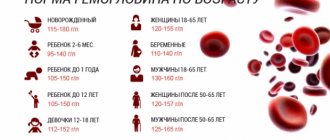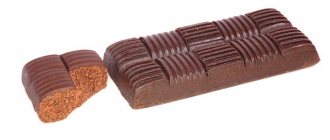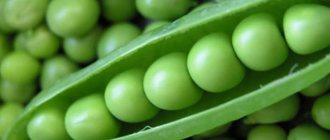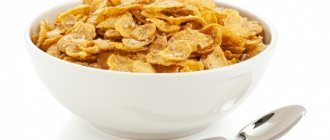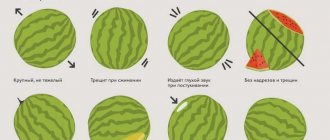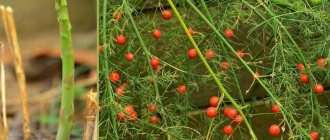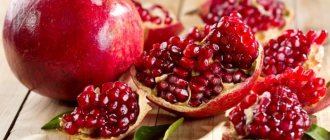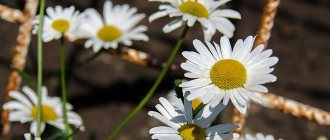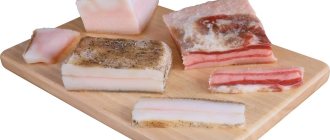Very often, young mothers during lactation are faced with the problem of a lack of breast milk. In pharmacy kiosks there is a whole range of drugs for such a case: homeopathy, teas, and even medicines. How our mothers and grandmothers coped with the lack of milk - with the help of nettle infusion. Soups are made from nettles, fresh leaves are added to salads, but the most common way of consumption is nettle decoctions and infusions. Nettle infusion contains vitamin C, ascorbic acid, and iron, which is so necessary during breastfeeding. Drinking herbal infusion has a beneficial effect on the body of a young mother.
Composition and value of the plant
Nettle is an extremely healthy plant. Its chemical composition includes almost all the vitamins vital for women after childbirth and during breastfeeding:
- A (has a beneficial effect on blood composition, participates in hematopoiesis);
- C (restores the overall tone of the body during breastfeeding and strengthens the immune system);
- E (considered a “beauty vitamin”, “responsible” for the normal condition of skin, hair, nails);
- K (necessary for the synthesis of red blood cells, helps maintain normal blood clotting, reduces blood loss during heavy menstruation);
- H (activates metabolism, providing the body with the energy necessary for life);
- group B (participate in metabolic processes and tissue regeneration).
Nettle is also rich in potassium, phosphorus, and sodium. Among the microelements we can note the presence of:
- magnesium;
- calcium;
- gland;
- silicon;
- zinc;
- Selena;
- boron;
- titanium;
- copper;
- chlorine;
- sulfur.
But the substances in the composition that are beneficial to humans are not limited to this. It has been scientifically proven that nettle contains:
- amino acids (histamine, porphyrin, sirotinin);
- tannins;
- phytoncides;
- flavonoids;
- organic acids (phenolic, pantothenic, phenolcarboxylic);
- essential oils.
The uniqueness of the composition provides a comprehensive beneficial effect on the body. Therefore, nursing mothers can and should drink nettle. Its benefits are as follows:
- prevention and control of inflammatory processes;
- urinary and choleretic effect;
- stimulation of red blood cell synthesis;
- blood purification, normalization of its composition (including lowering sugar levels and increasing hemoglobin), increasing coagulability;
- vasoconstriction;
- restoration of the immune system, normalization of metabolism and lipid metabolism;
- lactogenic effect;
- accelerating the restoration of any mucous membranes and the elasticity of the walls of blood vessels;
- beneficial effects on the cardiovascular system and the musculoskeletal system as a whole;
- restoration of the menstrual cycle;
- fight against hypo- and vitamin deficiency.
Most people consider nettle a weed, but it is simply a storehouse of vitamins and minerals that are needed for any organism.
Important! Lemons and black currants are the most well-known sources of vitamin C, carrots - vitamin A. Compared to them, their content in nettles is 2-3 times higher.
Plants
Folk remedies for improving the recovery of the body of a woman who has given birth to a child have a number of advantages. In addition to stimulating uterine contractions, they have hemostatic, anti-inflammatory and restorative properties. Most herbs additionally have a beneficial effect on lactation and improve the general condition of a woman.
Nettle. The first most popular drink. Nettle is used in the form of a decoction or tea to contract the uterus after childbirth. For 3-4 full st. l. dried plant requires 400-500 ml of hot water. The resulting medicine is drunk throughout the day, dividing it into 3-4 doses.
Birch. The leaves of the tree, collected in May, are dried and brewed as tea. For half a liter of water you need 4-5 tbsp. l birch leaves and a pinch of salt. The drink is kept for 2-3 hours, filtered and drunk in portions throughout the day.
White lily. For 500 ml of boiled water you need 2 tbsp. l. herbs. The infusion is prepared for 9-10 hours. After pumping, drink 200-300 ml per day.
Shepherd's purse. To prepare the drink you need 4-5 tbsp. l. dry plants and 1.5-2 cups of hot water. Steam the herb for about 3 hours in a thermos or wrap the dishes in a towel. The resulting volume is consumed throughout the day.
Field jar. For infusion you need 2-3 tbsp. l. jars and 1 glass of hot water. The drink is kept warm for 7-8 hours and taken 1 tsp. no more than 4-6 times a day.
Red geranium. A cold infusion of the plant is obtained from 2 tsp. herbs and 2 glasses of boiled but cooled water. The drink is left overnight and then the resulting volume is drunk per day.
Wormwood. To prepare the drink 0.5 tbsp. l. herbs are poured into 400-500 ml of boiling water and brewed for an hour and a half. After straining, consume no more than 1 glass per day in small portions.
Raspberry leaves. For two glasses of boiling water you need 2-4 tbsp. l. dried leaves. The drink is infused for an average of 4 hours in a warm place. The resulting product is consumed throughout the day.
Fenugreek or helba. The fruits of the plant are used. For tea, 20-40 g are steamed with 300-500 ml of boiled water. After childbirth, Helba is also used in its pure form to contract the uterus - several seeds a day are thoroughly chewed.
Kalina. To stimulate uterine contractions, only freshly squeezed plant juice is used. A few tbsp per day is enough. l., no more than 4, fresh berry juice.
Water pepper. A ready-made alcohol tincture for uterine contractions after childbirth is sold at the pharmacy. The product is recognized as effective by traditional medicine. If breastfeeding, it is better to consult your doctor.
Is it possible to take nettles while breastfeeding?
If a woman has no contraindications, the answer to the question “can a nursing mother drink nettles” is definitely yes. Its benefits to the body during the postpartum period are recognized even by official medicine.
Pregnancy is always a serious stress, accompanied by cardinal hormonal “restructuring” of the body. It leads to the fact that most of the nutrients meet the needs of the fetus; the body of the expectant mother is supplied with them on a residual basis. Nettle helps restore hormonal balance as quickly as possible, returning to the state before pregnancy, even if breastfeeding.
If there is a shortage of milk for breastfeeding (this can be caused by a whole range of factors), it gives a powerful lactogenic effect. Nettle is a mandatory ingredient in most pharmaceutical preparations to stimulate lactation. The compositions are beneficial not only for the mother’s body, but also for the baby, who receives vitamins and minerals through breastfeeding. This is an effective prevention of colic in babies.
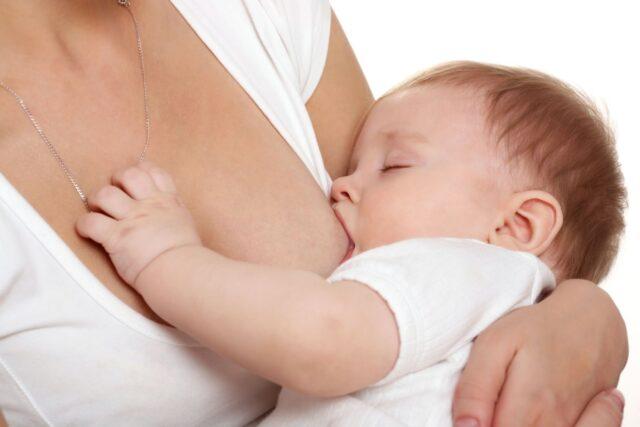
The benefits of nettle during breastfeeding and for postpartum recovery of the body have been tested by many women.
Important! Decoctions and infusions with nettle, as a rule, do not “conflict” with other folk remedies and medicines. They are prescribed as part of complex therapy to provide a general strengthening effect during breastfeeding.
How to take nettle during lactation?
Like any product, a nursing woman should introduce nettle into her diet with caution, after consulting with a pediatrician. On the first day, you need to make a sample of the decoction - 1 quarter of a mug, then take a break for 2-3 days. If the baby does not have allergic reactions - problems with the intestines and rashes on the face and body, you should continue to take the decoction during lactation, increasing it to 1-2 glasses a day. If you suspect an allergy, you should stop taking the decoction before the child reaches six months.
The benefits of nettle for breastfeeding
The benefits of nettle leaves during breastfeeding can hardly be overestimated. A decoction or infusion of them:
- restores metabolism, “starts” tissue regeneration processes;
- maintains the elasticity of the walls of blood vessels;
- stimulates appetite, improves the functioning of the digestive system;
- normalizes the menstrual cycle;
- fights heavy bleeding (lochia and menstruation) and inflammatory processes;
- provides a lactogenic effect;
- compensates for deficiency of iron and other microelements, fights vitamin deficiency
- raises the overall tone of the body, helps to get rid of extra pounds gained over 9 months;
- has a beneficial effect on the condition of the skin, nails, and hair.
Important! Fresh nettle leaves are much healthier for breastfeeding than dried or boiled ones.

If possible, it is better to prepare nettles for infusions and decoctions during breastfeeding yourself.
The benefits of nettle decoction for nursing mothers
Folk remedies from nettle during breastfeeding not only increase the volume of milk, but also improve its quality. Its fat content and overall nutritional value increase. A baby who receives all the necessary vitamins and minerals through breastfeeding in the required amount quickly strengthens the nervous system. He is less capricious, cries, and sleeps better.
The iron contained in nettles is especially important for a child’s body. Without it, normal growth and development of the baby is impossible.
To increase lactation
Nettle does not directly affect the functioning of the mammary glands during breastfeeding. The volume of milk increases due to the fact that the mother’s body regains tone and recovers from severe physical and psychological exhaustion. Other unfavorable factors are often added to it:
- chronic fatigue and lack of sleep;
- postpartum depression;
- strong emotional experiences;
- Digestive problems.
To ensure comprehensive health improvement of the body, and, as a result, to establish milk production for breastfeeding, seeds and greens of dill, fennel, cumin, galega, and anise are added to nettle mixtures.
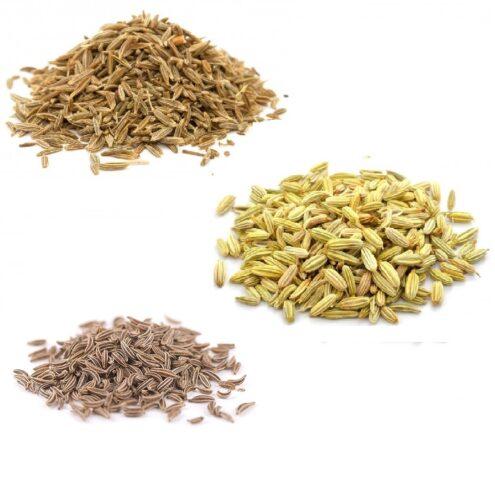
Dill, fennel, and caraway seeds are also useful for those who choose breastfeeding; they provide the body with a lactogenic and restorative effect.
To contract the uterus
Restoring the normal size of the uterus for the body is one of the primary goals. Nettle is a very effective remedy for this. It not only stimulates the contraction of the muscles of the uterus, as a result of which it contracts, but also compresses the blood vessels that fed the fetus before birth. Accordingly, by normalizing the size of the uterus, it simultaneously prevents postpartum hemorrhage and infections, helps remove lochia from the body, and reduces the intensity of pain.
Important! Nettle decoction and infusion in this case is not a panacea. If postpartum bleeding does not stop, is accompanied by attacks of dizziness, nausea, severe weakness, or fever, you must consult a doctor as soon as possible, or even better, call an ambulance.
For iron deficiency anemia
It is extremely rare to avoid anemia during pregnancy. Iron deficiency is also noticeable during breastfeeding. Women note general weakness, apathy, lethargy, increased fatigue, and severe drowsiness.
Nettle during breastfeeding is a valuable source of biologically active iron. Its atoms are easily “embedded” in the blood, restoring normal hemoglobin levels. The desired result is achieved in 2-2.5 months.
With heavy menstruation
Unusually heavy and painful periods after childbirth and during breastfeeding are common. Nettle provides the body with vitamin K and chlorophyll. In total they are:
- replenish iron deficiency and stimulate the production of red blood cells to compensate for blood loss;
- relieve pain, work as an antispasmodic;
- heal damage inevitable due to epithelial rejection.
Important! You cannot rely on folk remedies if the condition is very serious. When large blood loss provokes weakness, including attacks of clouding or loss of consciousness, severe dizziness, qualified medical assistance is necessary.
Beneficial properties of nettle for nursing women
The juice and leaves of this plant are rich in vitamins, minerals and other beneficial substances, which are especially necessary for the exhausted body of a young mother.

By taking nettle tea, you can achieve many positive changes:
- prevent or reduce bleeding;
- strengthen blood vessels;
- restore metabolism.
A healthy drink will saturate the body with ascorbic acid. There is approximately twice as much vitamin C in this herb as in black currant berries. It has a slight diuretic effect, which helps cope with the problem of edema and also normalizes intestinal function.
The vitamin and mineral composition of nettle decoction is no less impressive:
- potassium and iodine, necessary to stabilize the hormonal function of the thyroid gland;
- calcium, sodium, iron and copper;
- vitamins of group A, B, E, K.
- as well as flavonoids, phytoncides, tannins, glycosides, chlorophyll, tannins and organic acids.
And this is not all the beneficial properties of nettle. It stops bleeding, so it is often used for heavy periods or lochia.
Contraction of the uterus after childbirth
After the birth of a child, the female body is faced with another difficult task - “returning everything as it was.” First of all, this concerns the size of the uterus, which had to increase significantly in size.
Nettle after childbirth is an effective remedy that accelerates the contraction of the uterus to its original size. To do this, it is recommended to brew 3-4 tablespoons of crushed leaves with boiling water and take the cooled infusion half a glass 3 times a day.
Nettle infusion in the first hours and days after childbirth is also used to prevent postpartum hemorrhage. Since it contracts the muscles of the uterus, the blood vessels in it are also pinched, which slows down the release of blood. However, if the bleeding does not stop and is accompanied by severe weakness, you should urgently seek medical help.
For heavy periods
After the birth of a child, the menstrual cycle may not return immediately and the first periods may be heavy or painful. Nettle during breastfeeding is an excellent remedy for normalizing the cycle.
Due to the high content of vitamin K and chlorophyll, the decoction promotes rapid healing of the wound formed at the site of the torn epithelium. Nettle infusion is also rich in iron, so it will help replenish its deficiency after major blood loss. Tea made from the leaves of this herb has antispasmodic and analgesic effects.
It is recommended to use a decoction to shorten periods if they cause discomfort. If you experience severe weakness due to heavy blood loss, leading to fainting and dizziness, no herb will help, call an ambulance.
To enhance lactation
Nettle itself does not have a lactogenic effect. However, it can increase milk supply simply by improving the general condition of the mother and eliminating the effects of physical exhaustion during breastfeeding.
Sometimes it happens that nettle decoctions or infusions do not help increase the amount of milk. In this case, it is recommended to try other herbs with a lactogenic effect, for example, an infusion of anise or dill seeds. But remember that herbs for lactation are not the main thing. It is important to follow the basic rules of breastfeeding in order to improve milk production.
Nettle for lactation is often initially used in combination with other herbs, which makes it possible to enhance the overall healing effect and speed up recovery after childbirth.
How to brew and drink
Despite the apparent “harmlessness” of herbs for the body, nettle should be drunk while breastfeeding, not exceeding the daily norm and the duration of the “treatment” course. It is equally important to properly prepare a nettle infusion or decoction to improve lactation.
Preparation of nettle decoction for lactation
Raw materials can be purchased at the pharmacy (in bulk or in portions, in filter bags) or prepared independently. In the second case, it is better to go for fresh herbs in May or early June, when the concentration of nutrients in nettles is maximum. It is collected as far as possible from highways, industrial enterprises, and other objects that negatively affect the environment.
A decoction useful for breastfeeding is prepared as follows:
- Pour 2 tbsp of clean water into a saucepan. l. dry or finely chopped fresh nettle.
- Close the container with a lid, bring to a boil in a water bath, remove from the stove after 10-15 minutes.
- Without removing the lid, cool the broth to body temperature, strain, and pour in another glass of warm water.

It is permissible to immediately prepare the daily dose of decoction and add a little hot water each time you use it.
For variety, you can drink nettle during lactation in the form of an infusion. It is prepared like this:
- Pour boiling water (300-400 ml) over 20-25 fresh leaves or 1 tbsp. l. dry.
- Close the container tightly, wrap it in a towel (or pour the liquid into a thermos), and let it brew for an hour.
- Strain the finished infusion.
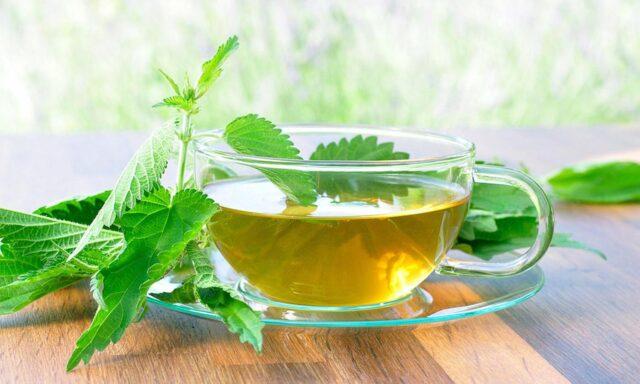
In appearance, nettle infusion is not much different from a decoction; the preparation time and concentration of nutrients are also approximately the same.
Other recipes for decoctions and infusions
Nettle is included in almost all herbal mixtures recommended for breastfeeding:
- Take a tablespoon of dried nettle, yarrow and dill. Pour 1 liter of boiling water and leave for at least 2 hours. It’s even better to leave it in a thermos overnight.
- Mix finely chopped fresh nettle, fennel seeds and cumin in a 2:1:1 ratio. Pour a tablespoon of the mixture into 0.2 liters of boiling water and leave for half an hour.
- Prepare the infusion as in the previous version, using dill and anise seeds.

Pharmacy teas recommended for those who choose breastfeeding almost always contain nettle leaves
Drinking regime is very important for a woman who is breastfeeding. Therefore, it is recommended to add dry leaves in a ratio of approximately 1:2 to large-leaf green or white tea. Or a decoction of nettles during breastfeeding can be poured into a ready-made drink.
Admission rules
In order not to harm your own health and the health of the child, when breastfeeding, decoctions and infusions of nettle are introduced into the diet gradually. You can start when the baby is one month old. Single serving – approximately 2 tbsp. l. immediately after the first feeding in the morning.
If the baby does not have allergies or other negative reactions, the “dose” can be gradually increased by 20-30 ml every 3-4 days. Limit – 250 ml at a time. Otherwise, you should wait up to six months to use nettle products. To get the maximum lactogenic effect, drink the decoction or infusion warm, 30-45 minutes before feeding, 3-4 times a day.
Important! If within 12-15 days from the start of taking the “medicine” the desired effect is not observed during breastfeeding, you should stop using nettle for breast milk lactation and consult a doctor.
Recommendations for use
But, despite all the benefits of nettle, it should be included in the diet of a nursing mother carefully and following some tips. For use as food, it is necessary to choose young plants that were collected away from roads and large industrial facilities. If this is not possible, then you can purchase the plant in dry form at the pharmacy. Nettle can be present in a woman’s diet during lactation in various forms.
How to prepare herbal tea?
There are several options for preparing this product:
- Freshly picked leaves of the plant must be thoroughly washed in cool water, dried and chopped with a knife. Spread in an even layer on a baking sheet and leave in the shade until completely dry. The leaves of the plant do not need to be crushed, but dried whole.
- It is necessary to mix nettle, fennel or caraway seeds in a 2:1 ratio. You can use both fresh and dried plants. This collection helps not only to establish lactation, but also to prevent colic in the child.
In the future, 1 tbsp. the collection is poured into a glass of boiling water and left for half an hour, then filtered and drunk. It is enough to drink three glasses of the resulting infusion per day . Each time you should prepare a new portion.
Important! The decoction should be drunk 30 minutes before putting the baby to the breast. It is very important at this time to observe the correct drinking regime - a young mother should drink at least 2 liters of clean water in 24 hours. The decoction should be drunk warm.
How to take during breastfeeding?
You can introduce this plant into your diet a month after giving birth. At the same time, like any other medicinal plant, it should be used for the first time in minimal quantities and preferably immediately after the baby is put to the breast in the morning.
It is best to introduce nettle into the diet in the form of decoctions . In this case, for the first time, you are allowed to drink no more than 100 ml. If the child does not experience any side effects and the mother’s well-being has not changed for the worse, then each next time the volume of the decoction can be increased by 30 ml. The maximum permissible single dose is 250 ml.
The decoction should be taken in its pure form, without adding any ingredients to it.
If a child has an allergy, the introduction of nettle into the diet should be postponed until he is 6 months old.
How else can a nursing mother take it?
But in a woman’s diet during lactation, this useful plant can be present not only in the form of decoctions. You can prepare a lot of healthy and very tasty dishes from nettles .
Vitamin salad
It is prepared from the young upper leaves of nettle and young green wild garlic (bear's onion).
- Take 100 g of these ingredients, add a boiled chicken egg cut into small cubes and add a little salt.
- For dressing it is better to use low-fat sour cream.
Wild garlic can be replaced with young sorrel leaves, and chicken eggs with quail.
The first time a mother can try this salad is when the baby is 5 months old.
Soup
The soup can be cooked with chicken or beef broth , or just with water.
- Place 3 pcs in boiling liquid (1 l). potatoes chopped into small cubes.
- While it is cooking, you need to chop 220 g of young nettle leaves.
- Separately, lightly fry one carrot and onion in a small amount of oil.
- When the potatoes are ready, fry and nettle greens should be boiled in a saucepan and add 1 tbsp. lemon juice, bay leaf and salt to taste.
- This soup should be served with a boiled chicken egg; if desired, you can add a little sour cream to the plate.
Reference! This dish is allowed to be consumed by mothers whose children are already three months old.
Recipes for dishes with nettles for nursing mothers
During breastfeeding, nettle can be used not only as a raw material for decoctions and infusions. Healthy dishes are prepared from greens that will pleasantly surprise you with their taste and help diversify your diet.
Nettle salad
This salad is simply a “vitamin bomb”, and useful elements are vital for mothers who are breastfeeding. Unfortunately, it can only be prepared in spring and early summer.
What you will need:
- young nettle leaves, wild garlic, sorrel - 100 g each;
- eggs (one chicken or 5-6 quail);
- sour cream 10-15% fat or refined vegetable oil (olive, sunflower, any other) - for dressing;
- a pinch of salt – optional (but it’s better to do without it).
The process of preparing the salad is extremely simple:
- Wash, lightly squeeze and dry the greens.
- Boil eggs hard.
- Finely chop and mix all ingredients. Dress the salad.
Important! It is better to eat this salad right away; it is not recommended to keep it in the refrigerator.
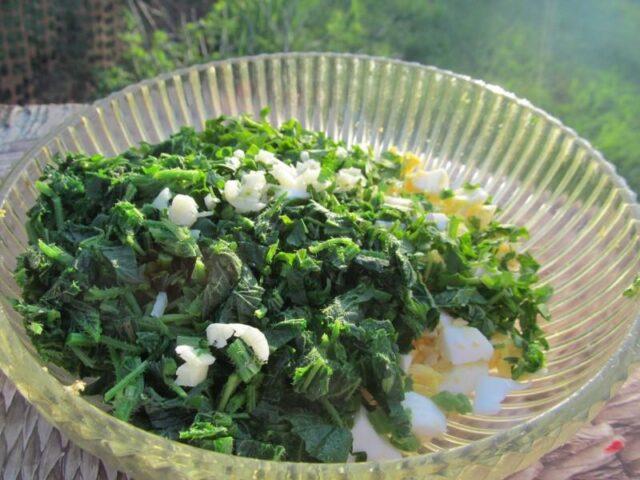
The dish can be introduced into the diet when the child is six months old
Young nettle soup
Nettle soup can be cooked either with broth made from lean lean meat (beef, chicken, turkey) or simply with water. The first option, of course, is tastier and more nutritious, which is an important factor when breastfeeding.
Required ingredients:
- boiling water or broth - 1 l;
- fresh nettle leaves – 220-250 g;
- medium potatoes - 3 pcs.;
- small onion and carrot - 1 pc.;
- lemon juice – 1 tbsp. l.;
- refined vegetable oil - for frying;
- bay leaf, salt - to taste and optional;
- chicken egg – 1 pc.;
- low-fat sour cream - 1 tbsp. l.
The soup is prepared extremely simply and quickly, which is an important factor for a mother with a baby:
- Peel the potatoes, cut into cubes, throw into a saucepan with broth, and put on fire.
- Finely chop the onion, grate the carrots, fry in oil until golden brown.
- Chop the nettles, mix with the roast, add to the soup 5-7 minutes before the potatoes are ready.
- After another 1-2 minutes, salt the dish and add bay leaf.
- Pour lemon juice into the finished soup, stir, let it brew for at least half an hour. Serve with sour cream and hard-boiled egg.
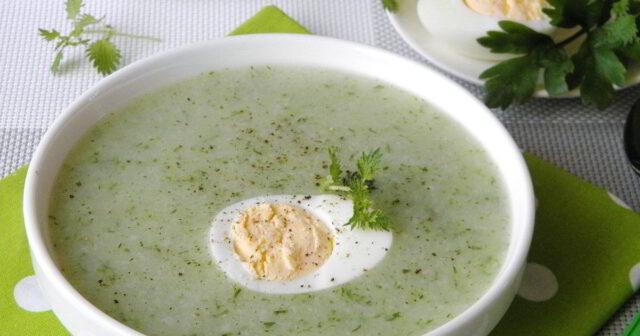
It is quite possible to prepare a puree soup if you remove the potatoes from the broth when they are cooked and mash them
Pie with cottage cheese and nettles
Ready-made yeast dough is quite suitable for it, but it is better to prepare it yourself. Required:
- wheat flour – 200 g;
- cottage cheese 5-9% fat – 100 g;
- vegetable oil – 100 ml;
- salt - on the tip of the knife.
For filling:
- fresh nettle leaves – 300 g;
- any greens to taste (dill, parsley, green onions, lettuce, spinach, sorrel) - about 100 g;
- cottage cheese (the higher the fat content, the better) – 200 g;
- sour cream 20% fat – 150 g.
To make the pie you need:
- Knead the dough from all ingredients, divide it in half.
- Grind the greens for the filling (in a blender or chop with a knife), mix with sour cream and cottage cheese.
- Grease a mold or baking sheet with oil, place a “sheet” of half the dough 0.7-1 cm thick on it.
- Spread the filling evenly over it, cover with the second “sheet”, and pinch the edges.
- Bake at 180ºC for 30-40 minutes.
Important! To get a beautiful crust, the pie is brushed with a beaten egg mixed with a teaspoon of sour cream.
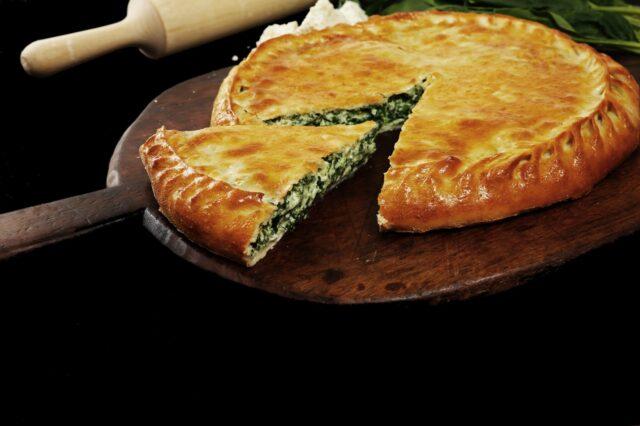
The pie can be made open, but then the filling will not be so soft
Dosage and recipes
Nettle can be used in different forms during lactation. Most often these are, of course, decoctions or infusions, both “salt” and in combination with other herbs. But in addition to drinks, this herb can be used to make soups, salads and even baked goods. In any case, its beneficial properties for feeding will remain.
Like any other “innovations”, a nursing mother should take nettle carefully, starting with small portions – 1 tablespoon. Then, if there are no signs of allergy or intolerance, you can gradually increase the volume.
To increase the amount of breast milk, it is recommended to drink nettle infusions about half an hour before feeding. You can choose the recipe according to your taste or the presence of the necessary additives:
- Pour 25 nettle leaves into a liter of boiling water, bring to a boil and turn off after a minute. Leave for half an hour and take a third of a glass three times a day.
- Pour a glass of dried leaves with the same amount of boiling water, wrap and leave for about 1-1.5 hours. Take warm, three times a day.
- Mix a spoonful of dry nettle with a spoonful of yarrow and dill seeds, pour in 1 liter of boiling water and leave for at least 2 hours. Take chilled.
- You can drink nettle by adding it to your usual white, green or herbal tea.
Restrictions and contraindications
The health benefits of nettle are undeniable and scientifically proven, however, like any folk remedy, during breastfeeding it can cause allergies in the mother and/or child. This phenomenon is rare, but not impossible.
Individual intolerance is not the only contraindication for using nettle while breastfeeding:
- hypertension or severe atherosclerosis, increased blood clotting;
- any chronic diseases of the kidneys, pelvic organs;
- acute renal or heart failure;
- varicose veins, thrombosis, thrombophlebitis;
- the presence of tumors (even benign ones and with unknown etiology), as well as cysts and polyps, especially if they are accompanied by bleeding;
- the need for a course of taking antidepressants or drugs to combat insomnia (nettle enhances their effect);
Even if it seems that there are no contraindications, and despite numerous positive reviews from mothers about the benefits of nettle for lactation of breast milk, you cannot “prescribe” it to yourself. It is necessary to consult with your doctor about the possibility of taking infusions and decoctions while breastfeeding, and including it in the diet. The duration of the “course” and frequency of administration should also be determined by a specialist.
Important! Nettle decoction is very useful for breastfeeding, but it is strictly contraindicated for pregnant women. The drug can provoke uterine contractions, resulting in miscarriage or premature birth.
Contraindications and side effects
In some situations, it is necessary to refrain from including nettles in any form in your diet.:
- For varicose veins and thrombophlebitis. The active substances of this plant strongly thicken the blood, which can lead to acute complications of these diseases.
- If you have a history of allergies to nettles.
- For kidney diseases.
- In the presence of any oncological diseases of the pelvic organs and bleeding in the postoperative period during their treatment.
Attention! Experts do not recommend consuming nettle for people who take any sedatives of herbal or synthetic origin. This plant has a fairly strong sedative effect and will only enhance the effect of the sedative.
In some cases, side effects may occur when consuming nettle . This is usually an allergic reaction in the form of a rash or itchy skin. Sometimes bloating and diarrhea may occur.
